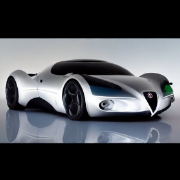Foto, notizie, video curiosi di Auto - [NB. NO violenza, NO tragedie, ecc...]
-
Contenuti simili
-
Avvistamenti auto moderne rare 1 2 3 4 88
Pubblicato da Renault,
- auto curiose
- auto strane
- (e 1 altro in più)
- 877 risposte
- 215923 visite
-
- 6 risposte
- 6890 visite
-
[One-Off] Maserati Quattroporte Shooting Brake 2016 1 2 3
Pubblicato da Beckervdo,
- maserati quattroporte sb
- quattroporte
- (e 7 altri in più)
- 26 risposte
- 18260 visite
-
-
-








.thumb.jpg.902d2a4f20a129e92b6f6920407b81bd.jpg)













Messaggi Raccomandati:
Crea un account o accedi per lasciare un commento
Devi essere iscritto per commentare e visualizzare le sezioni protette!
Crea un account
Iscriviti nella nostra community. È facile!
Registra un nuovo accountAccedi
Sei già registrato? Accedi qui.
Accedi Ora